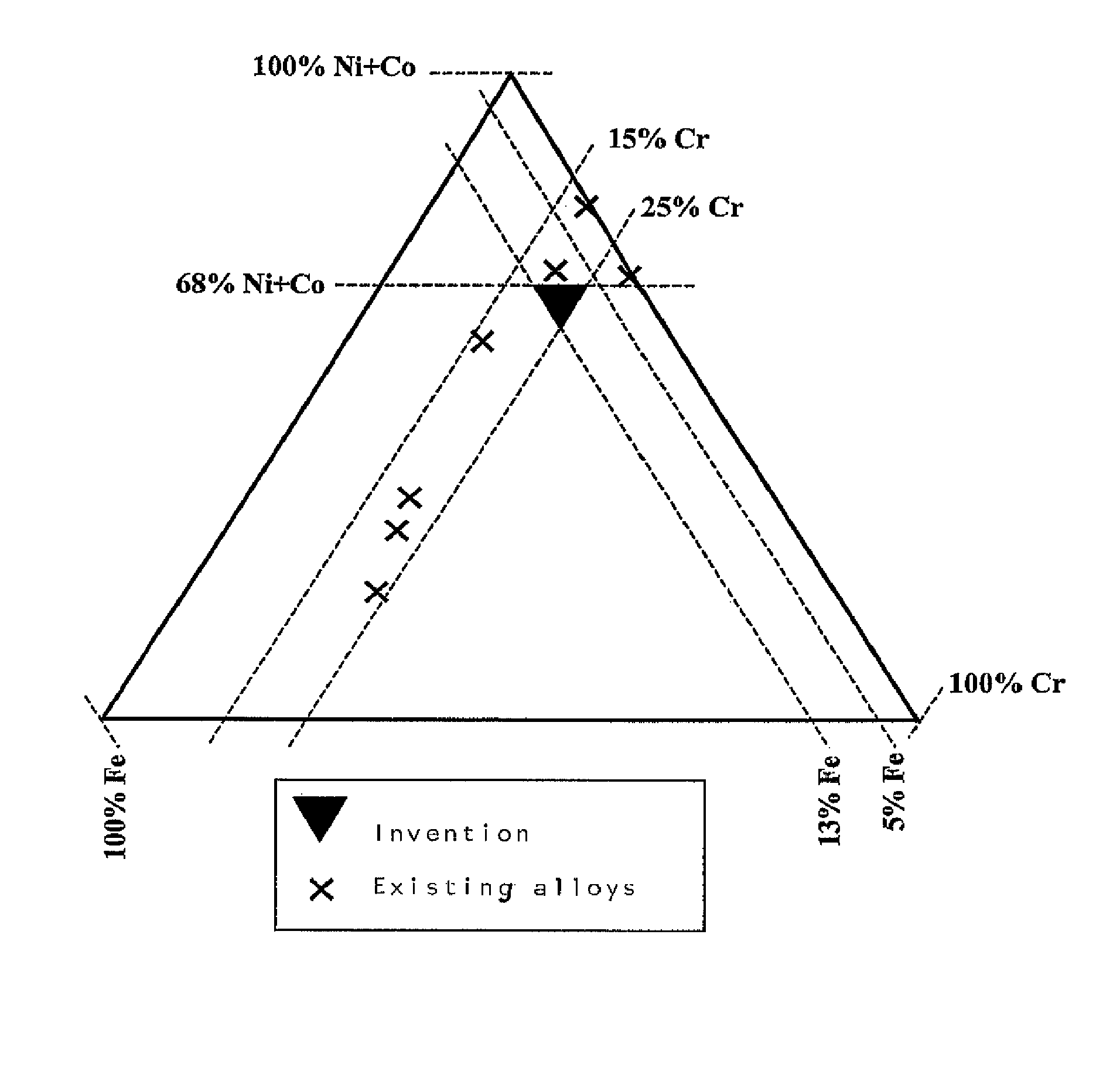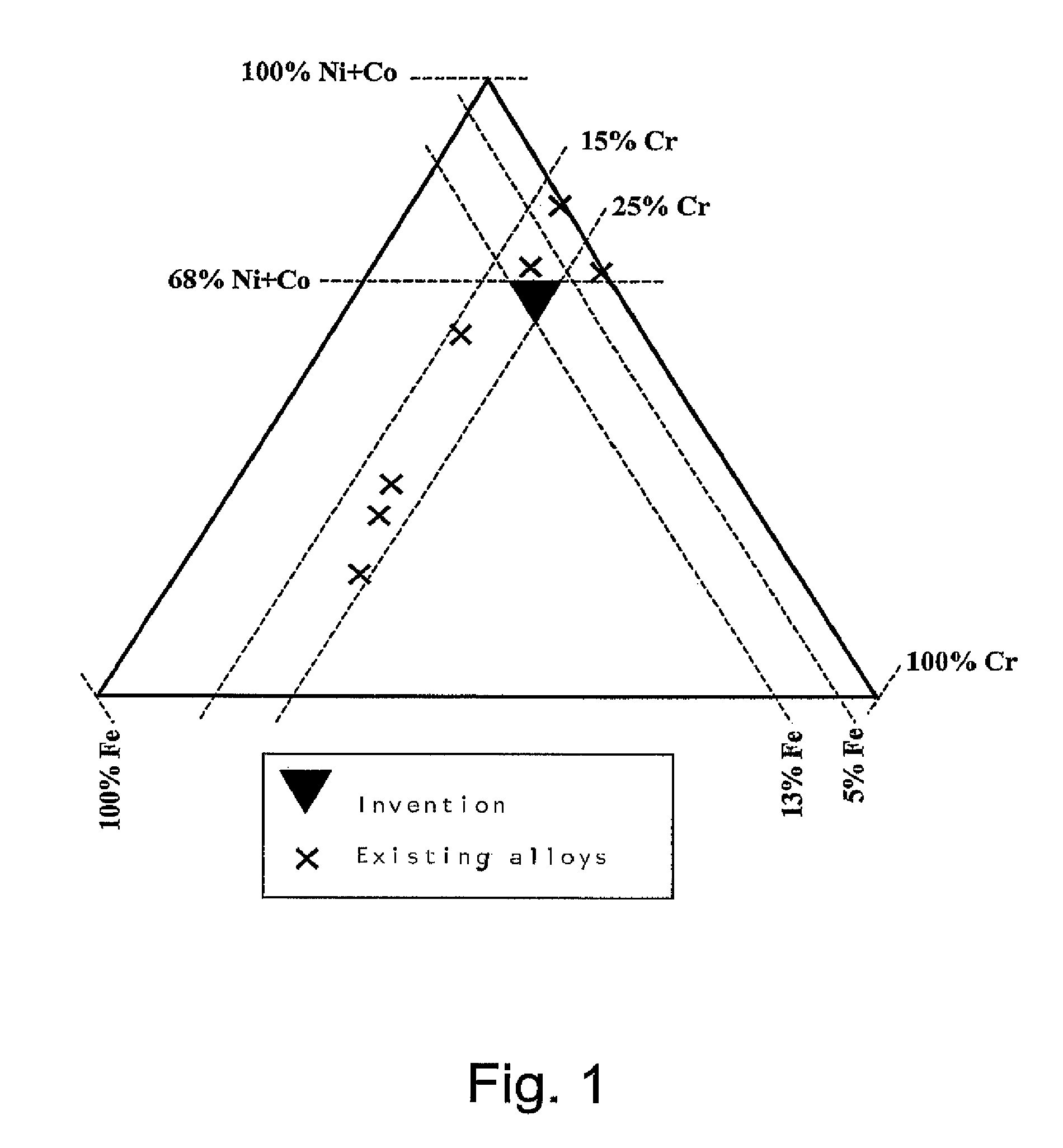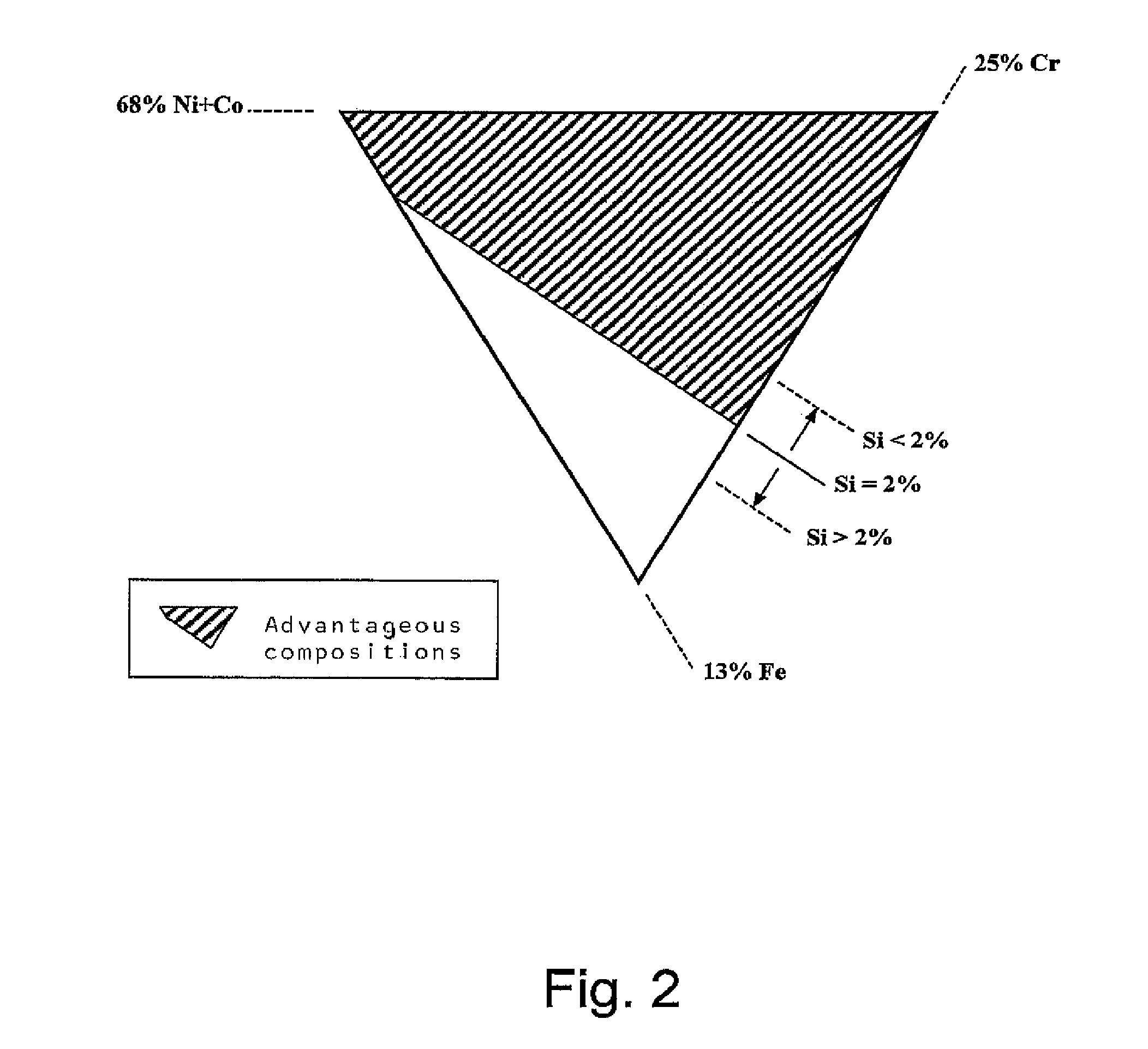Ni—Cr—Fe alloy for high-temperature use
a high-temperature, alloy technology, applied in the direction of ohmic-resistance heating, heating element materials, electric heating, etc., can solve the problems of long life of the element, leakage current or even short circuit between the heating coil and the metal cover, and achieve low production cost, good oxidative stability, and high electrical resistivity
- Summary
- Abstract
- Description
- Claims
- Application Information
AI Technical Summary
Benefits of technology
Problems solved by technology
Method used
Image
Examples
Embodiment Construction
[0029]According to one embodiment, an alloy according to the invention is characterised in that its Ct-value at 1,000° C. is 1.10 or lower. The Ct-value can be measured as specified by, for example, the standard ASTM B70-90.
[0030]Eight different compositions of the alloy according to the invention have been smelted at laboratory scale, hot-rolled and cold-drawn to wire following standard procedures. The chemical compositions of the alloys, their resistivities and their Ct-values at 1,000° C. are given in Table 3 and Table 4.
[0031]
TABLE 3Chemical compositions (percentage by weight) of testsmelts. Ni is used as balance element.Smelt no.12345678Cr24.023.615.916.123.823.616.416.4Fe12.813.113.013.15.05.35.24.9Si2.41.02.51.02.21.02.21.0Mn0.70.10.10.70.10.70.70.1C0.020.020.020.020.020.010.020.02P0.0050.0050.0040.0040.0050.0050.0040.004S0.0010.0030.0030.0010.0010.0020.0010.002Otherelements
[0032]
TABLE 4Resistivity (ohm * mm2 / m) at room temperature and Ct at1,000° C. for test smelts.Smelt no....
PUM
| Property | Measurement | Unit |
|---|---|---|
| temperature | aaaaa | aaaaa |
| temperature | aaaaa | aaaaa |
| electrically resistive | aaaaa | aaaaa |
Abstract
Description
Claims
Application Information
 Login to View More
Login to View More - R&D
- Intellectual Property
- Life Sciences
- Materials
- Tech Scout
- Unparalleled Data Quality
- Higher Quality Content
- 60% Fewer Hallucinations
Browse by: Latest US Patents, China's latest patents, Technical Efficacy Thesaurus, Application Domain, Technology Topic, Popular Technical Reports.
© 2025 PatSnap. All rights reserved.Legal|Privacy policy|Modern Slavery Act Transparency Statement|Sitemap|About US| Contact US: help@patsnap.com



